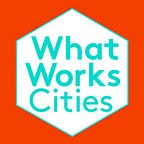From Bikes to Libraries: How Stronger Procurements Are Making Boston Better for All Residents
By Sharman Stein and Kristin Taylor
On a recent night in East Boston, a small group of women and men donned bike helmets, listened to a presentation on how to use the City’s bike share program, Hubway, and within minutes, took off on a ride through a nearby park. The meetup was intended to encourage residents who aren’t regular Hubway users to start biking, addressing a city goal to ensure that its bike share program is located equitably throughout Boston’s neighborhoods and not just in the more affluent areas where ridership is more profitable.
The City currently offers Hubway membership at a reduced annual rate of $5.00 for low-income residents; by going into neighborhoods to offer an introduction to Hubway and free rides, the City also hopes to overcome what Boston’s Active Transportation Director Stefanie Seskin calls the “soft barriers” to biking, such as not having a credit card to enroll, unfamiliarity with how the system works, or a fear of cycling. By meeting up in the area where those residents live, attendees also learn how they can bike to local health clinics, libraries, and other nearby destinations.
This neighborhood-based approach was part of the contract the City created when initiating its work with Motivate, the vendor that helps Boston run Hubway. While negotiating the contract, city staff worked with Daniel Edelman of What Works Cities partner the Government Performance Lab (GPL) at the Harvard Kennedy School to analyze the business model underlying the bike share program and build a contract that would incentivize the vendor to meet the City’s policy goals — equity was one, as well as ensuring that the bikes were well-maintained and readily available to Hubway’s 14,000 annual members and one-time riders, such as tourists. “Dan helped us to think differently — to design the contract so that it would result in benefits to people and meet our policy goals,” Seskin said. “He helped with the economic model, breaking down how it works as a business and how we could design the contract to incentivize the vendor’s behavior. Now, other departments are thinking the same way about their contracts.”
Laura Melle, Senior Procurement Lead for the City’s Department of Innovation and Technology, is driving a lot of this change. A graduate of the Harvard Kennedy School, she studied with Jeffrey Liebman, the Director of GPL. Liebman taught a lecture on procurement, and Laura had a lightbulb moment after Liebman said much of what government does “is writing checks.” She realized cities could make an enormous difference in outcomes by leveraging the outside contractors hired to complete work, ranging from road repairs to bike programs. “Managing contracts better — that’s another library you get to build,” she said.
Indeed, a library renovation will be the outcome of one of her latest projects, procuring new project management software for the City’s many construction projects, empowering managers to track progress and allowing for real-time data entry by staff in the field. We visited the Dudley Library in Boston’s Roxbury neighborhood, where renovation will start later this year. The changes will include the creation of more public spaces suitable for career development trainings or teen writing groups for residents who live in the area. Other contracting goals include working to ensure vendor diversity.
Working with GPL’s Innovation Fellow Elijah de la Campa, Melle has also overseen a project to enhance the nearly $8 million worth of contracts with vendors who resurface asphalt on the City’s 800 miles of streets. Previously, the contracts, which hadn’t changed since the ’70s, weren’t tracking vendor performance. By setting up metrics that defined, as Melle put it, “what’s a good job for safe, usable streets,” the City is better able to evaluate performance and “redefine the City’s relationship with the contractor.” And those contractors that are doing well are awarded more work from the City. It’s a win for everyone: the City knows public funds are being well-spent, contractors are rewarded for strong performance, and residents benefit from improved roads and streets.
That’s the end goal of improving procurements, after all. As Seskin said, “There are changes we can make in this nerdy realm that aren’t really public-facing but result in changes for real people.”
Sharman Stein is the Director of Communications at What Works Cities, and Kristin Taylor is the initiative’s Senior Communications Manager. This week, they’re visiting several participating cities in the Northeast to show you more about how local governments are finding what works. Read more of their posts here.
